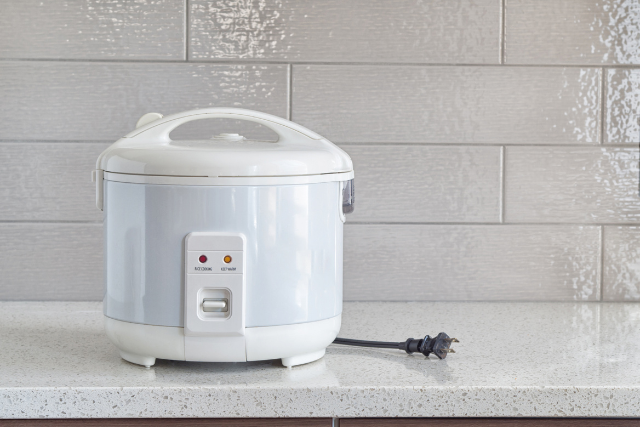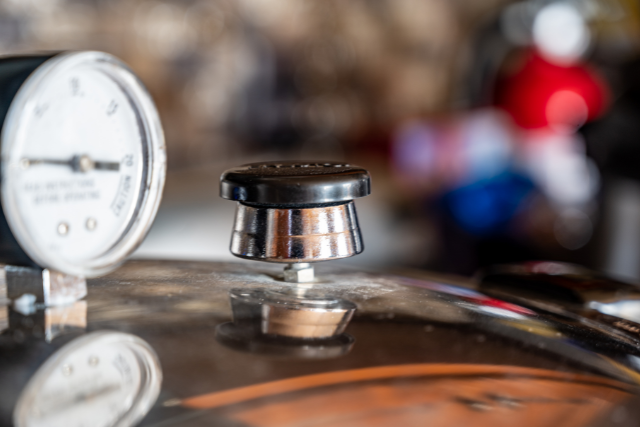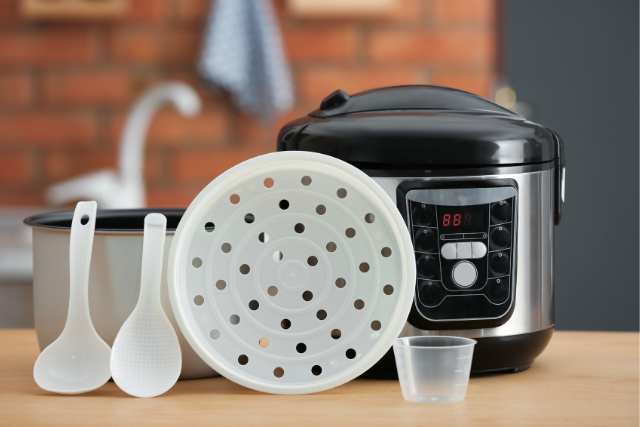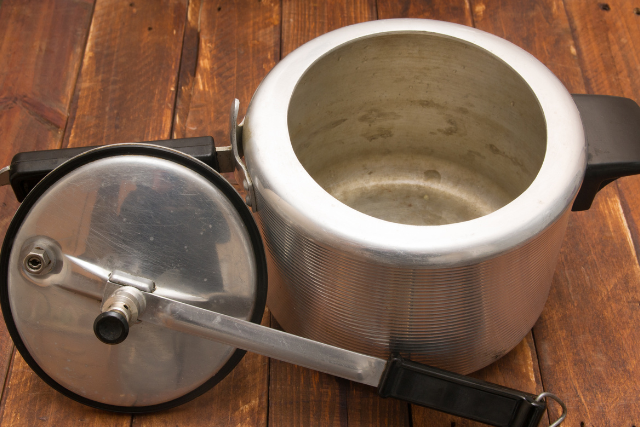Beyond Rice: Exploring the Uses of Rice Cookers
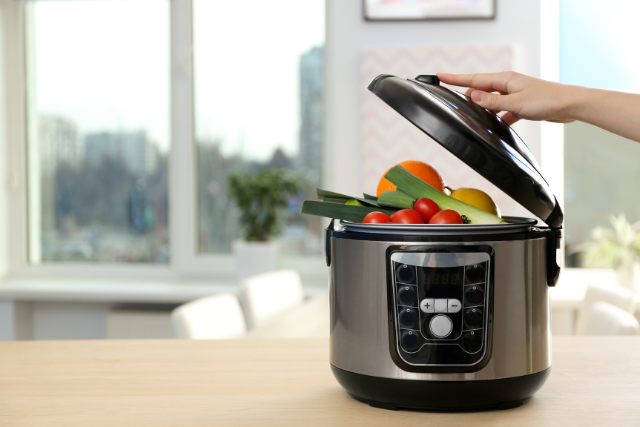
If you believe rice cookers are limited to cooking rice, think again. These versatile appliances can do much more than create the perfect fluffy rice.
From steaming vegetables and seafood to slow-cooking meats and preparing one-pot meals, rice cookers offer a range of functions that can enhance your cooking experience, making it easier and more efficient.
In this article, we will explore the various functions of rice cookers and how they can elevate your culinary skills.
Key Takeaways
- Rice cookers are versatile appliances for steaming and healthy cooking vegetables and seafood.
- They can also be used for making soup, stews, and slow cooking, allowing for the simmering and reduction of sauces and the tenderization of meat.
- Rice cookers are great for cooking grains and legumes, providing even heat distribution and moisture retention for optimal results.
- They are also useful for slow-cooking meats and poultry, producing juicy and succulent dishes with minimal effort.
Steaming Vegetables and Seafood
If you want to steam vegetables and seafood, you can use your rice cooker. Rice cookers are not just for cooking rice; they have multiple functions that can be used to prepare various dishes. Regarding steaming vegetables and seafood, rice cookers offer great convenience and efficiency.
One of the key benefits of using a rice cooker for steaming is its ability to distribute heat evenly.
This ensures that the vegetables and seafood are cooked thoroughly and uniformly. The moisture retention feature of rice cookers also plays a significant role in preserving the natural flavors and nutrients of the ingredients.
The sealed environment the rice cooker creates traps steam, preventing it from escaping and producing tender and succulent vegetables and seafood.
Different rice cooker models come with various cooking settings that can be adjusted to suit your preferences.
You can control the cooking time and temperature for steaming vegetables and seafood by selecting the appropriate setting. This allows customization based on the specific cooking techniques required for different dishes.
Steaming vegetables and seafood in a rice cooker not only provides convenience but also offers health benefits.
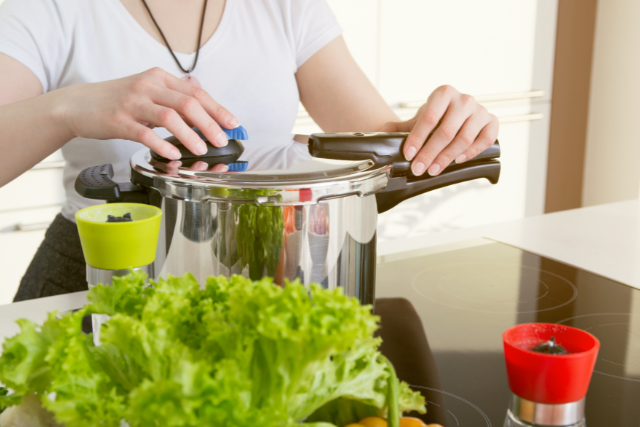
Steaming is a healthy cooking method as it preserves nutrients and natural flavors without excessive oil or fat. Using a rice cooker, you can easily enjoy delicious and nutritious steamed vegetables and seafood.
Making Soups and Stews
To make soups and stews, your rice cooker can be helpful. Rice cookers are versatile and can be used for more than cooking rice.
Here are five ways your rice cooker can assist you in making soups and stews:
- Making sauces: Rice cookers provide even heat distribution, allowing you to simmer and reduce sauces to your desired consistency. Whether it’s a tomato-based pasta sauce or a creamy cheese sauce, your rice cooker can handle it all.
- Creating broths: Using the rice cooker’s steaming function, you can extract rich flavors from bones, vegetables, and spices to make flavorful broths. Add your ingredients and let the cooker work its magic.
- Slow cooking: Rice cookers often have a slow setting, perfect for making hearty stews. The low, steady heat helps tenderize the meat and allows flavours to blend, resulting in a satisfying dish.
- One-pot convenience: With a rice cooker, you can sauté your ingredients in the pot before adding liquids and other ingredients. This eliminates the need for multiple pots and pans, making clean-up a breeze.
- Keep warm function: Rice cookers typically have a keep warm function that allows you to simmer your soups and stews until ready to serve. This feature is especially useful if you need to prepare your meal in advance or want to keep your soup or stew warm for longer.
With these functions and features, your rice cooker can be a valuable tool in making soups and stews. Experiment with different recipes and enjoy the convenience and versatility it offers.
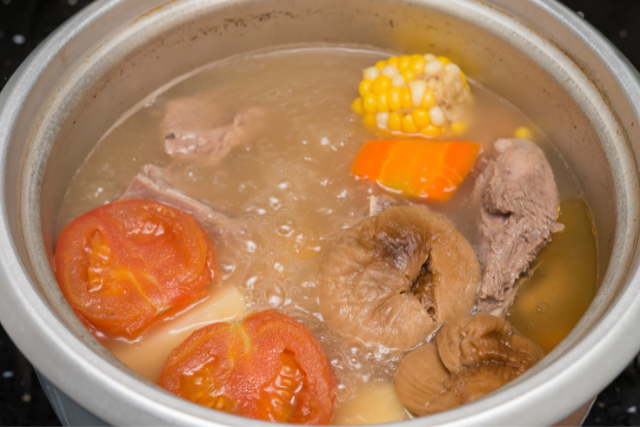
Cooking Grains and Legumes
Cook a variety of grains and legumes effortlessly in your rice cooker. Rice cookers are not limited to rice; they can also cook other grains and legumes, such as beans and quinoa.
The key to successfully cooking these ingredients in a rice cooker lies in understanding the functions and features of the appliance.
Regarding cooking beans, rice cookers offer a convenient and efficient solution. The even heat distribution ensures that the beans are cooked thoroughly and evenly, eliminating the need for constant monitoring.
The moisture retention feature of rice cookers also helps to keep the beans tender and moist throughout the cooking process.
Preparing quinoa in a rice cooker is also easy. The rice cooker’s different cooking settings, such as the ‘quinoa’ or ‘grain’ setting, allow for precise cooking of quinoa, resulting in perfectly cooked grains every time.
The rice cooker’s ability to maintain a consistent temperature helps to achieve optimal results, ensuring that the quinoa is cooked to perfection without becoming mushy or overcooked.
Rice cookers are versatile kitchen appliances that can be used to cook a variety of grains and legumes. Whether you’re cooking beans or preparing quinoa, the functions and features of rice cookers make the process effortless and yield delicious results.
Slow Cooking Meats and Poultry
Using a rice cooker, you can easily slow-cook meats and poultry to perfection. Rice cookers offer a convenient way to achieve tender and flavorful results with minimal effort.
Here are five key benefits of using a rice cooker for slow-cooking meats and poultry:
- Even Heat Distribution: Rice cookers are designed to distribute heat evenly, ensuring that your meats and poultry cook uniformly. This helps to prevent overcooking or undercooking certain parts of the dish.
- Moisture Retention: A rice cooker’s sealed environment helps retain moisture, keeping your meats and poultry juicy and succulent. This is especially beneficial when slow-cooking tougher cuts of meat, as the additional moisture helps to break down connective tissues and tenderize the meat.
- Convenient Braising Techniques: Rice cookers can be used for braising, a cooking method that involves searing the meat and then simmering it in liquid. This technique helps to enhance the flavor and texture of the meats and poultry, resulting in delicious and tender dishes.
- Flavor Infusion: By slow-cooking meats and poultry in a rice cooker, you can infuse them with various flavors. Whether you’re using herbs, spices, or marinades, the sealed environment of the rice cooker allows the flavors to penetrate the meat, resulting in a more flavorful end product.
- Time and Energy Efficiency: Rice cookers offer a set-it-and-forget-it approach to slow cooking. Once you set the desired cooking time and temperature, the rice cooker will automatically switch to a keep-warm mode once the cooking is complete. This not only saves you time and effort but also reduces energy consumption.
Rice cookers are not just limited to cooking rice. They can be valuable tools for slow-cooking meats and poultry, providing even heat distribution, moisture retention, convenient braising techniques, flavor infusion, and time and energy efficiency.

Preparing One-Pot Meals
When preparing one-pot meals, rice cookers offer a versatile and efficient solution. With their ability to cook rice and other ingredients simultaneously, these appliances save you time and effort in the kitchen.
The ease of use makes them convenient for busy individuals or anyone looking to simplify their cooking process.
Making Yogurt and Other Fermented Foods
You can easily make yoghurt and other fermented foods using your rice cooker. Rice cookers are versatile appliances for cooking rice and can also be used to explore the world of fermentation.
The key to successful fermentation lies in the controlled environment provided by the rice cooker, which ensures the right temperature and moisture levels for the fermentation process.
When making pickles in a rice cooker, the heat distribution is crucial. The even distribution of heat helps maintain a consistent temperature throughout the cooking process, allowing the pickles to ferment evenly.
The moisture retention feature of rice cookers ensures that the pickles stay moist and do not dry out during fermentation.
Fermenting tofu in a rice cooker requires precise temperature control. The different cooking settings of rice cookers come into play here.
By using the ‘warm’ setting, you can maintain a steady temperature of around 100°F (38°C), which is ideal for fermenting tofu. This setting prevents the tofu from cooking and allows the fermentation process.
Rice cookers provide a convenient and effective way to make yoghurt and other fermented foods. Their heat distribution and moisture retention capabilities, along with the various cooking settings, make them an excellent tool for experimenting with fermentation.
Baking Breads and Desserts
Explore the delicious possibilities of baking bread and desserts in your rice cooker. Rice cookers are not limited to cooking rice; they can also be used to create mouthwatering pastries and cakes.
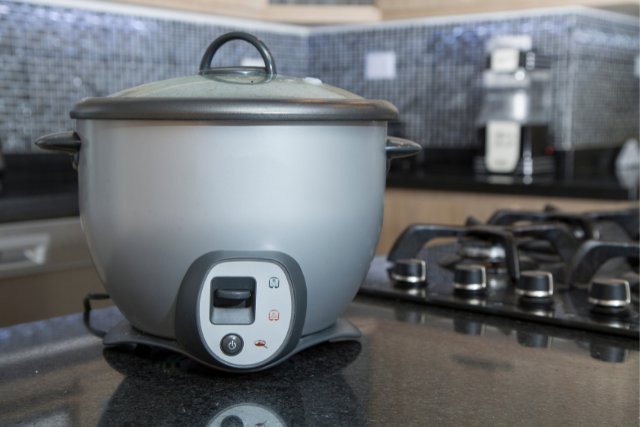
Frequently Asked Questions
Can Rice Cookers Be Used to Steam Vegetables and Seafood?
Rice cookers can be used for steaming vegetables and seafood, offering a convenient and efficient cooking method. They ensure even heat distribution and retain moisture, resulting in delicious outcomes.
Is It Possible to Make Soups and Stews in a Rice Cooker?
Yes, you can make soups and stews in a rice cooker. Rice cookers have the ability to simmer and slow-cook, making them versatile for preparing a variety of dishes.
Can Rice Cookers Be Used for Cooking Grains and Legumes?
Rice cookers can indeed be used for cooking grains and legumes. These versatile appliances can handle various cooking tasks, such as cooking pasta and making porridge.
They offer a convenient and efficient solution for preparing a wide range of dishes without needing multiple pots and pans.
With a rice cooker, you can effortlessly cook grains and legumes to perfection, saving time and effort in the kitchen.
Is It Safe to Slow Cook Meats and Poultry in a Rice Cooker?
It is generally safe to slow-cook meats and poultry in a rice cooker, but some precautions must be taken. However, alternative methods like a slow cooker or oven may provide more consistent results.
When cooking meats and poultry in a rice cooker, it is important to note that the cooking process may take longer than other methods. Additionally, it is crucial to ensure that the meat is fully cooked to avoid any potential foodborne illnesses.
To begin, it is essential to properly prepare the meat before placing it in the rice cooker. This includes marinating the meat to enhance its flavour and tenderness. Furthermore, trimming any excess fat from the meat to prevent it from becoming greasy during the cooking process is crucial.
Once the meat is ready, placing it in the rice cooker with enough liquid is important to ensure proper cooking. This can be achieved by adding broth, water, or any other desired cooking liquid. Ensuring that the meat is fully submerged in the liquid is equally important to promote even cooking.
After placing the meat in the rice cooker, setting the cooker to the appropriate temperature and cooking time is imperative. This will vary depending on the type and size of the meat being cooked. It is important to consult a reliable cooking resource or recipe to determine the correct settings for your specific meat.
It is important to check the meat for doneness throughout the cooking process. This can be done by using a meat thermometer to ensure that the internal temperature reaches a safe level.
The USDA recommends cooking poultry to an internal temperature of 165°F (74°C) and beef, pork, veal, and lamb to an internal temperature of 145°F (63°C) with a three-minute rest time.
Can Rice Cookers Be Used to Make Yogurt and Other Fermented Foods?
Rice cookers can be used to make homemade yoghurt and other fermented foods. By using rice cookers to experiment with fermentation, you can enjoy the convenience of a single appliance for various culinary creations.
Conclusion
Rice cookers have evolved beyond their traditional use of cooking rice and can now be utilized for various culinary tasks. From steaming vegetables to baking bread, these versatile appliances offer convenience and efficiency in the kitchen.
With their advanced features and technical capabilities, rice cookers provide a reliable and effective cooking method for various dishes.
By understanding the functionalities and benefits of rice cookers, individuals can enhance their cooking experience and achieve optimal results.

